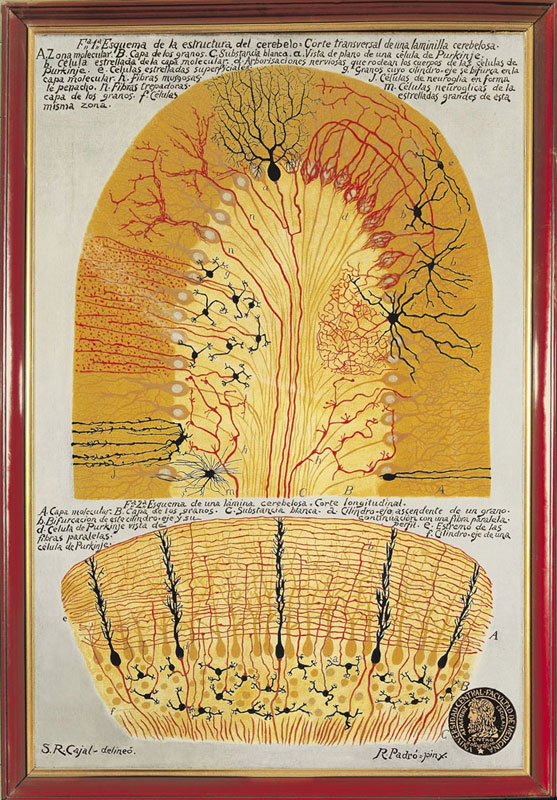
Here are two cutaway views of the cerebellum, which coordinates movement. The top drawing has a rich diversity of cells, including treelike Purkinje cells, seen in red and tan, and stellate cells, shown in black. The bottom drawing is a longitudinal cross section of the cerebellum.
Anatomist Santiago Ramon y Cajal was the first to see–and illustrate–what neurons really do. His exquisitely detailed drawings changed our understanding of the brain and nervous system. Cajal relentlessly pursued his microcopic study of animal tissues, leading to an essential discovery: Brain signals jump from cell to cell rather than flow through a continuous web of fibers, as was believed at the time.See more of these exquisite illustrations in Discover
The Scientist Who Drew Brains, and Then a Nobel Prize.
Source: Discover

